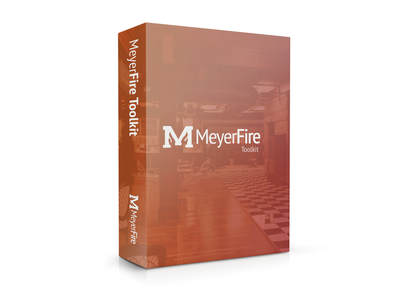|
While doing a sprinkler inspection it was found that the main check valve for the system failed. The system was installed before backflows were mandated on sprinkler systems.
I know that a backflow preventer needs to be installed in its place, but have been unable to find any code that says it does. Anyone able to help? Sent in anonymously for discussion. Click Title to View | Submit Your Question | Subscribe
11 Comments
Anthony
10/6/2022 07:38:21 am
This will be part of the plumbing or heath code not from NFPA 13. Check your state or local building code for backflow prevention requirements.
Reply
Corey Eppinghaus
10/6/2022 08:05:00 am
As Anthony noted it will be in the plumbing code or health code you may also want to check to see if the municipality has a backflow prevention program, they might be able to force them to install one/repair.
Reply
Robb
10/6/2022 08:08:43 am
agreee 100% with Anthony. AWWA and UPC requires these, not the fire code. Is your sprinkler connected to Potable water system (public drinking water)- than yes a BFD is required. if connected to a private fire main -and not cross conencted to the city or campus water mains - than not required.
Reply
10/6/2022 08:14:37 am
Here in Metro NY backflow devices are initiated by the local Water District for their review and then forwarded if required, to the County Health Department.
Reply
Jesse
10/6/2022 08:16:53 am
This is part of the plumbing code. You won't find it in 13.
Reply
Dan Wilder
10/6/2022 08:41:56 am
The system was installed with a check valve and assumed approved with that installation, its failure during a 25 inspection means repair or replace like for like not add a backflow and potentially change the hydraulics of the system.
Reply
Alex
10/6/2022 08:43:40 am
Hi,
Reply
HJ
10/6/2022 09:21:37 am
NFPA 1 (2018) contains the following:
Reply
Brian
10/6/2022 11:33:36 am
The type of system wasn't stated. If this is a dry system then only the single check in addition to the dry riser should be needed. Also is there a fire service main with a pit where the backflow device could already be located?
Reply
Mark Harris
10/6/2022 12:29:21 pm
Agree that plumbing codes and water suppliers are where you will find the requirements. But think they are trying to conform to the EPA Safe Water Drinking Act of 1974 but as I recall fire sprinkler systems came into play with the 1986 amendments.
Reply
James Art
10/12/2022 01:12:44 pm
Backflows Devices are forbidden in CA:
Reply
Leave a Reply. |
ALL-ACCESSSUBSCRIBESubscribe and learn something new each day:
COMMUNITYTop June '24 Contributors
YOUR POSTPE EXAMGet 100 Days of Free Sample Questions right to you!
FILTERS
All
ARCHIVES
July 2024
PE PREP SERIES |
MeyerFire
- Blog
- Forum
-
THE TOOLKIT
- SUBMIT AN IDEA
- BACKFLOW DATABASE*
- CLEAN AGENT ESTIMATOR*
- CLOUD CEILING CALCULATOR
- DOMESTIC DEMAND*
- FIRE FLOW CALCULATOR*
- FIRE PUMP ANALYZER*
- FIRE PUMP DATABASE*
- FRICTION LOSS CALCULATOR
- HANGER SPACER*
- IBC TRANSLATOR*
- K-FACTOR SELECTOR*
- NFPA 13 EDITION TRANSLATOR ('19 ONLY)
- NFPA 13 EDITION TRANSLATOR ('99-'22)*
- LIQUIDS ANALYZER*
- OBSTRUCTION CALCULATOR
- OBSTRUCTIONS AGAINST WALL*
- PITOT CONVERTER
- PLUMBING FIXTURE COUNTS
- QUICK RESPONSE AREA REDUCTION
- REMOTE AREA ANALYZER*
- SPRINKLER DATABASE*
- SPRINKLER FLOW*
- SYSTEM ESTIMATOR*
- TEST & DRAIN CALCULATOR
- THRUST BLOCK CALCULATOR
- TRAPEZE CALCULATOR
- UNIT CONVERTER
- VOLUME & COMPRESSOR CALCULATOR
- WATER STORAGE*
- WATER SUPPLY (US)
- WATER SUPPLY (METRIC)
- UNIVERSITY
- PE Exam
- LOGIN
- PRICING
- OUR CAUSE

MeyerFire.com is a startup community built to help fire protection professionals shine.
Our goal is to improve fire protection practices worldwide. We promote the industry by creating helpful tools and resources, and by bringing together industry professionals to share their expertise.
MeyerFire, LLC is a NICET Recognized Training Provider and International Code Council Preferred Education Provider.
All text, images, and media Copyright © 2016-2024 MeyerFire, LLC
We respect your privacy and personal data. See our Privacy Policy and Terms of Service. The views, opinions, and information found on this site represent solely the author and do not represent the opinions of any other party, nor does the presented material assume responsibility for its use. Fire protection and life safety systems constitute a critical component for public health and safety and you should consult with a licensed professional for proper design and code adherence.
Discussions are solely for the purpose of peer review and the exchange of ideas. All comments are reviewed. Comments which do not contribute, are not relevant, are spam, or are disrespectful in nature may be removed. Information presented and opinions expressed should not be relied upon as a replacement for consulting services. Some (not all) outbound links on this website, such as Amazon links, are affiliate-based where we receive a small commission for orders placed elsewhere.













 RSS Feed
RSS Feed
